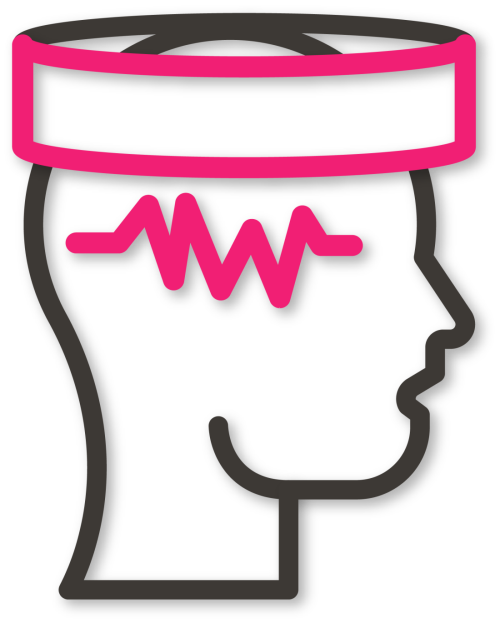
Neuroscience Surveys
The world of work is in flux. It feels like change, uncertainty and anxiety are high. All of these factors mean that there is a lot of talk around HR circles about resilience and how you can build it. I sat down to talk to our customer team about this, and they were quick to point out that psychological safety at work might be a better lens to look through.
It might be useful to begin by looking at what psychological safety actually is. Alex Nesbitt, Customer Success Executive, explains that psychological safety is closely related to our vision of Freedom to be Human. She sums it up by saying that it’s the ability to “be yourself, always.” Within the workplace, Alex explains, this could be seen as “a culture where openness and honesty are encouraged, without the fear of judgement.”
Rosanna Bull, Senior Customer Success Manager, explains that psychological safety is really important in times of stress and change, because it allows people to roll with the punches. She says “where you have a more psychologically safe workforce, people actually deal better inherently with uncertainty and change.” Jacqui Weeks, Customer Success Manager, adds that psychological safety is also key when it comes to constructive and healthy debate. She says that “different views and perspectives should be welcomed within the workplace because this is how great organisations truly evolve.”
The Neuroscience of Psychological Safety
Tony Latter, our Co-Founder and Chief Platform Officer, explains how psychological safety links into our neuroscience model. He says, “safety is linked to the instinctive brain type. This means it’s part of our most primordial systems, linked to our fight or flight response in the basal region of our brains.” This means that it can almost override our ability to process other brain types and is directly linked to happiness! If your people aren’t feeling safe they can’t feel happy, but the effects of poor psychological safety go deeper than this.
Tony explains that poor psychological safety can have a huge impact on the workplace. He says “when people don’t feel psychologically safe, their brain stays permanently on high alert. Not only is this exhausting for the individual, leading to potential burnout and mental illness, it can also have huge effects on team dynamics and morale.” Rosanna explains “At a team level, when people feel psychologically safe they are more likely to share their thoughts and ideas, so collaboration is improved. Projects can benefit from a greater diversity of thought. For individuals, a greater feeling of psychological safety fosters creativity - as less mental energy is taken up on 'safety checks', so we have more bandwidth for other styles of thinking!”
Figuring out how psychologically safe your organisation is might not be as straightforward as you think. Alex points out that sharing how you are feeling in an open forum can be challenging, regardless of how safe people feel. She says “expecting someone to pour all their feelings for everyone to see, or even joining a 'wellbeing' type meeting where half the company is there could be really overwhelming.” This is why anonymity is so important. She stresses that the key to this is “creating a space where people can share their feelings and emotions and know they will be respected and listened to.”
The short answer to this is yes! Our neuroscience-backed platform is perfect for measuring psychological safety. Tony explains, “there are a couple of ways our platform can help with psychological safety. Firstly, if you have a hunch something might be up with your culture, but aren’t sure how big of a part safety in particular plays, our Cultural Assessment survey would be perfect.” Alex agrees, three questions are focused on safety. Within the survey these are placed into the larger context of other happiness and engagement drivers, she explains.
However, as Tony points out, “if you have already ascertained that safety is an issue within your organisation, our safety pre-built survey drills down into the detail of underlying factors at play.” Rosanna explains the survey, “there are three areas which build together to create safety within an organisation, these are trust, working environment and work-life balance. Our survey is built to deep dive into which aspects are working well for your organisation, and where you might have room for improvement.”
When it comes to practical tips to create safety, Rosanna underscores the importance of communication. “Change and uncertainty can also negatively influence psychological safety” she explains. Practically she suggests “limiting unnecessary change, clearly explaining the reasons for change, communicating things in advance, and when things are uncertain making sure you recognise that uncertainty and empathise with the fact that must make people feel anxious or unsafe.”
Jacqui also suggests that encouraging feedback, and acting on it, can build safety. She says “Allowing others to pressure test and poke holes in one's ideas or thinking, is the key to strengthening psychological safety.” Rosanna agrees, she says you want to avoid “people feeling that by giving feedback they are going to have a target on their backs”. By encouraging feedback and by actioning items, or explaining why they can’t be implemented, you can build “teams of people who are motivated to give you honest feedback and contribute to the improvement of the workplace.”
I asked the team what they thought leaders could do to help support psychological safety within their teams. Rosanna says the best thing you can do as a leader is to lead by example! She explains that this is because of a principal called the vulnerability loop. “Showing vulnerability is the best way to build trust within your team. Sending signals of vulnerability literally resonates with other people, who then feel able to do the same and open up, which strengthens feelings of trust.”

Linked to Happiness in our neuroscience methodology... learn more
The Happiness Index helps organisations measure the key employee engagement AND happiness drivers to power their people strategy.
Our unique platform offers the products, insights and tools to shine a light on your cultural health and empower management to drive thriving cultures.
Our neuroscience-based pre-built surveys measure the full employee experience - from onboarding to exit to empower and enable organisations to understand their people and create data-led action plans.
